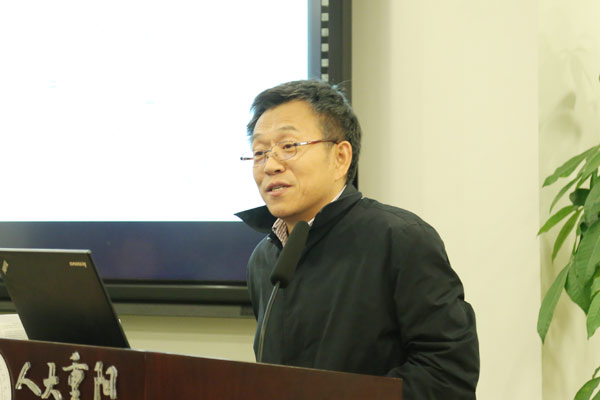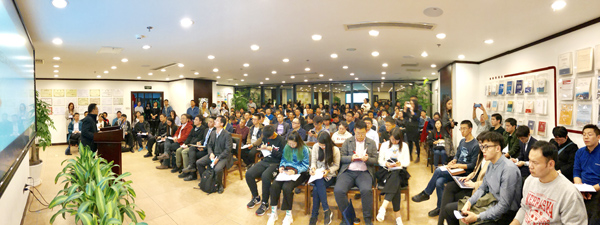Picture
Your Present Location: HOME> PictureHuang Dahui: China-Japan ties, improving in short-term, competitively cooperating in long term
On the evening of October 19th, RDCY Seminar Series was held in Chongyang Institute for Financial Studies at Renmin University of China (RDCY). Professor Huang Dahui, deputy dean of School of International Relations and Silk Road School at Renmin University of China, was invited to deliver a speech entitled the Evolution of Japan’s China Policy and Future Trend of Sino-Japan Relations. The lecture was presided over by Guan Zhaoyu, an associate researcher at RDCY, and Hu Haibin, deputy dean of RDCY delivered a speech and on behalf of Wang Wen, executive dean of RDCY, welcomed the arrival of Professor Huang Dahui.

In his speech, Professor Huang Dahui said that 2010 is a turning point in China-Japan ties and the first year of new type of China-Japan ties. In 2010, China’s GDP exceeded that of Japan and China became the world’s second largest economy, which badly impacted China-Japan relations. Especially, the “China threat theory” in Japan has suddenly escalated. At the time, Japan claimed that China’s military budget continued to increase and maritime power was growing quietly with the expansion of China’s economic strength and disseminated that “China has changed the status unilaterally with its strength”, worsening Japan’s security environment. Therefore, dealing with the rise of China is the biggest issue for Japanese diplomacy in the 21th century. Japan has already regarded China as a strategic competitor and based on realism, Japan has adopted a policy of “check and balance” against China.
Then, Professor Huang Dahui expatiated the process from deterioration to redemption of China-Japan ties. He mentioned that since the collision of the Diaoyu Islands in September 2010, China-Japan ties have gradually deteriorated and the contradiction between China and Japan shifted from historical issues to maritime territorial disputes. In 2013, due to Japanese Prime Minister Shinzo Abe’s visit to the Yasukuni Shrine, China-Japan ties deteriorated to the worst. Since 2014, China-Japan ties have begun to change, and the governments have managed and controlled the situation through negotiations and consultations. In May 2018, Premier Li Keqiang visited Japan and China-Japan ties returned to normal track.
Professor Huang Dahui argues that there are profound domestic and international factors behind the redemption of China-Japan relations. Domestically, the inside of Japanese government demands an improvement in China-Japan ties, and the Japanese economic community has a strong will to cooperate with China. From an international perspective, Trump’s “America first” and trade protectionism policies have changed the international landscape. In addition, Japan is also desiring to expand overseas markets and seek cooperation between the “Belt and Road” and the “Indo-Pacific Strategy”. Meanwhile, Japan expects to solve DPRK hostage problem and participate in the Korean nuclear issue through China-Japan relations improvement.

On the eve of Japanese Prime Minister Shinzo Abe’s visit to China, Professor Huang Dahui made some predictions on the possible achievements and the future development of China-Japan ties. He pointed out that China-Japan ties will continue to improve in the short term, but in the medium and long term, China and Japan will maintain the pattern of competition and cooperation. In the next three to four years, both China and Japan need to maintain a more harmonious relationship. However, because the structural contradictions between China and Japan are still prominent, the negative factors of China-Japan ties still exist, such as the history, territory and Taiwan issue. And with the uncertainty of American foreign policy, we shouldn’t hold blind optimism on China-Japan ties. Accordingly, China needs to continue to consolidate China-Japan economic relations, strengthen the foundation of China-Japan ties, and alleviate the impact of external environment on China-Japan ties.























































































 京公网安备 11010802037854号
京公网安备 11010802037854号





